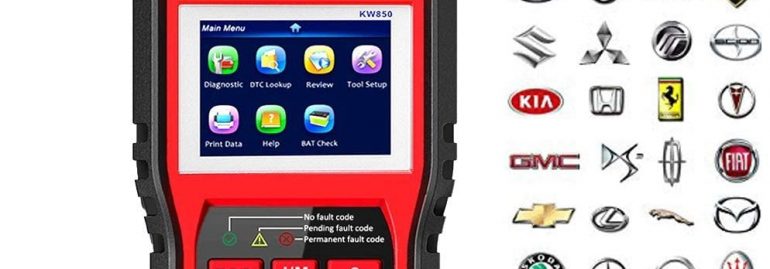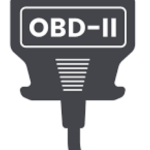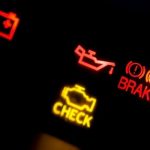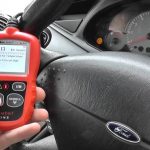OBD2 codes are an invaluable tool for diagnosing vehicle issues before they get out of hand. Not only that, but they offer you the chance to save money on expensive repairs before it’s too late.
Modern vehicles utilize OBD2 codes (diagnostic trouble codes), which are standardization defined by the Society of Automotive Engineers and automakers.
Engine
Engines are machines that transform energy into motion. Usually, these are gas-powered engines; however, diesel or electric ones may also exist.
Enhancing the performance of your car’s engine is possible with a turbocharger. These devices offer extra power and improved fuel economy without increasing emissions, since they recover wasted energy from exhaust gases.
A turbocharger is an air pump that draws in ambient air and compresses it to a higher pressure before feeding it into your engine. Not only does this improve engine efficiency, but it helps meet increasingly stringent emissions regulations as well.
An OBD2 code is a five-digit number that’s part of your car’s self-diagnostic system. It helps mechanics pinpoint where an issue may originate so they can diagnose and repair it quickly.
These codes can be located on your vehicle’s dashboard or using an OBD2 scan tool. Once plugged into the OBD II port underneath the steering column of your car, these diagnostic tools will give you a comprehensive report about any engine issues.
These codes, also referred to as “check engine light codes” or “diagnostic trouble codes,” are issued by automakers to notify drivers when there’s an issue with their cars and encourage them to get it fixed promptly.
An OBD2 code displayed on a dashboard indicates that some system has experienced an issue. It could be with the engine, transmission, or something completely different altogether.
The initial character of a code indicates which system caused the fault, while its second digit indicates whether it’s generic or manufacturer-specific. Generic codes apply to all vehicles while manufacturer-specific codes are unique to your car’s maker.
For example, a cylinder miss could be an OBD2 code that indicates the air/fuel mixture in a particular cylinder is too lean. This error code is commonly encountered on older systems and must be understood so you can take steps to rectify it.
Transmission
When driving a vehicle, the transmission is one of its most essential systems. This device allows you to shift gears quickly and efficiently, maximizing your car’s power when needed for faster acceleration. Furthermore, the transmission helps maintain lower gears when slowing down to avoid damaging the engine.
When your transmission starts to malfunction, the Onboard Diagnostic System (OBD II) in your car sends trouble codes to the dashboard. A code reader connected to an adapter beneath the dash reads these codes to diagnose what’s wrong and how to fix it.
The OBD2 system consists of multiple computers, each designed to control specific sensors within your car’s various systems. These sensors communicate with one another via the Control Area Network (CAN), a communication protocol that enables multiple computers to exchange information and report back to one another.
Many of these computers are electronic control units (ECUs), each responsible for a specific system like an engine or transmission. When an error code appears in one of these ECUs, it signals its associated computer in the ECU to report back to OBD II.
Some obd2 codes are global, or universal; that is, they apply to any vehicle. On the other hand, some codes are manufacturer-specific, meaning they’re designed specifically for certain models.
P0613 – This code is specific to automatic transmissions and indicates an issue with the transmission control module. A malfunctioning TCM may prevent shifting properly or indicate other faults within the machine.
PO218 – This is a common obd2 code and indicates an overheating transmission. Low fluid levels, restricted lines or an improper cooling fan can lead to this condition, so be sure to check the fluid level in your transmission before trying to repair the problem.
If this code appears with other transmission codes, it could be indicative of more serious problems with your vehicle than initially suspected. Contact a specialist who can accurately diagnose the issues and restore your car to optimal performance.
Emissions
OBD2 codes are an invaluable tool in combatting emissions. On-board diagnostics (OBD2) technology in your car allows it to monitor various systems that affect emissions performance and alert you if any malfunctioning occurs. OBD2 will even illuminate a warning light on your instrument panel for added assurance.
OBD codes are stored in a vehicle’s engine computer and can be retrieved with an OBD2 scan tool or code reader. They’re composed of numbers that tell you which system or circuit is faulty; the first number indicating whether it’s generic (SAE) or manufacturer-specific; while the second, third, and fourth numbers specify which part caused the issue.
According to your vehicle model, OBD2 codes can be divided into six distinct categories: Fuel or Air Metering Injection; Ignition; Emissions; Vehicle Speed Controls; Idle Control; and Computer Output Circuit. Each category has its own set of trouble codes associated with it.
A P0xxx code indicates a problem with the fuel or air metering injection system. A P3xxx code suggests an ignition issue or engine misfire, while a P4xxx code signals an emissions system issue such as inadequate catalytic converter efficiency.
OBD2 Codes in your engine computer’s memory are known as Data Trouble Codes. Erase these codes may allow you to pass the emission test, but it’s best not to do this without first fixing whatever caused the issue in the first place.
When your vehicle is being serviced at the repair shop, the technician will attach a cable to your engine computer to retrieve its OBD2 codes. These codes are essential in the diagnosis process as they indicate what caused the issue and require action from the technician.
According to EPA emissions standards, vehicles must install on-board diagnostics (OBD) to monitor and report on the performance of their emission control system. OBDs play an integral role in cutting pollution and are mandatory by law in most states.
Fuel
Fuel is a chemical substance that stores energy for combustion. It can come in the form of liquid, solid or gas and there are different kinds of fuels such as gasoline, ethanol, kerosene and diesel.
A suitable fuel should possess several characteristics, such as high calorific value, low moisture content and minimal noncombustible matter. Furthermore, it should have a moderate ignition temperature with little or no ash after combustion.
Another essential consideration is finding a quality fuel at an economical price. Doing so will enable you to save both money and energy.
The type of fuel you use will impact your obd2 codes. Most vehicles come equipped with various fuel types, and which one you choose may have a significant effect on how well your vehicle runs.
For instance, high-octane fuel will be harder for an engine to burn than lower ones. Furthermore, oil with high sulfur content will cause your engine to run poorly.
Fuels such as gasoline, kerosene and diesel can be obtained from primary sources like crude oil. Other types of fuel are processed from their natural forms like methane, butane or propane that come from natural sources.
Electronic Vapour Absorption (EVAP) is designed to collect and store evaporated fuel vapors in a special tank, so they can be burned when your engine runs low on fuel. Unfortunately, sometimes this EVAP system may leak and cause an OBD2 code to appear.
Diagnosing an obd2 code can be tricky, and usually requires some detective work to identify what’s causing the problem. Usually, this issue lies within either the fuel pump or wiring harness; you can test its voltage using a digital voltmeter.
If the voltage is within manufacturer’s specifications, you can replace the pump. However, if not, you have two options: fix any faulty wires or inspect all pump components and wiring for damage.
If you’re having difficulty diagnosing a problem with your fuel system, it’s essential that you visit an auto mechanic immediately. They will be able to accurately identify the issue and provide assistance in fixing it.






